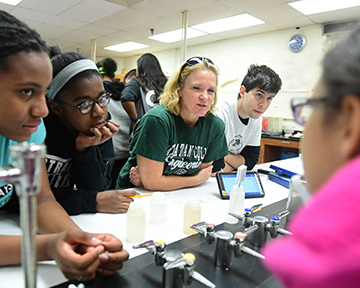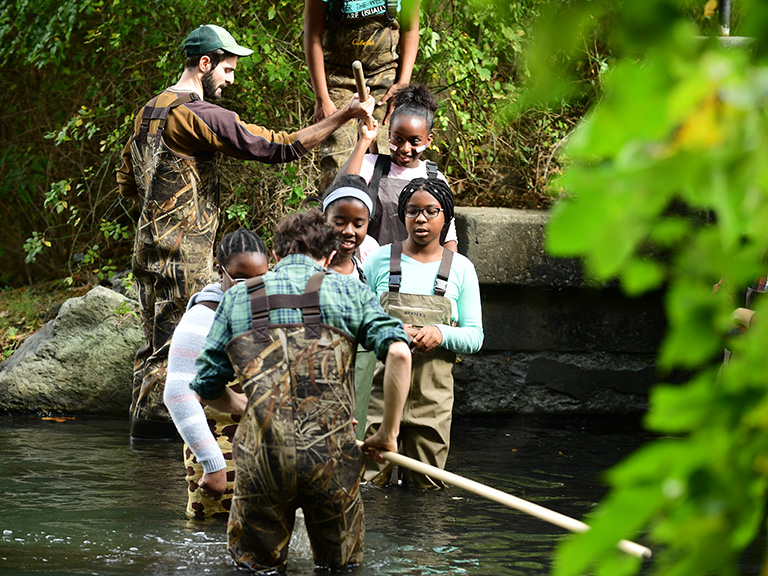 Manhattan College’s engineers know about clean water and know about the Bronx. Three graduate students, Kerryanne Donohue, P.E., visiting instructor of civil and environmental engineering, and Jessica Wilson, Ph.D., assistant professor of civil and environmental engineering, invited students from Greenburgh’s Central School District in Westchester County to participate in “A Day in the Life of the Hudson River Estuary,” a local effort to educate local youth about the need for clean water in their backyard.
Manhattan College’s engineers know about clean water and know about the Bronx. Three graduate students, Kerryanne Donohue, P.E., visiting instructor of civil and environmental engineering, and Jessica Wilson, Ph.D., assistant professor of civil and environmental engineering, invited students from Greenburgh’s Central School District in Westchester County to participate in “A Day in the Life of the Hudson River Estuary,” a local effort to educate local youth about the need for clean water in their backyard.
The Hudson River Estuary is a drowned river valley, running from Troy, N.Y., just outside Albany, to the tip of Staten Island. Like all estuaries, the Hudson River Estuary is critical to maintaining clean water in the Hudson River, and can rapidly disappear with a relatively small change in sea levels.
“It’s the students’ estuary,” Donohue says. “It’s up to them to care for it, learn about it and keep it sustainable for the future.”
To start the day, John Abbatangelo ’17, ’18 (M.S.), Stephanie Castro ’17, ’18 (M.S.), Tim Conway ’17, ’18 (M.S.), and Mohamed Diallo ’16 (M.S.) led the group of Greenburgh students through a series of tests in the Leo Hall labs. The group recreated some of the dirty water that builds up in the estuary, filtered the water, and simulated a test that shows what the wetland is doing to clean the water that flows into the Hudson River.
 The students then walked over to the nearby Tibbetts Brook wetlands in Van Cortlandt Park to explore the bottom of the estuary and create a log of what organisms live there. The group found water probes that were installed around the estuary two weeks earlier, and could be connected to computers via bluetooth. The students collected that data and submitted it to the New York State Department of Environmental Conservation for their records and future research.
The students then walked over to the nearby Tibbetts Brook wetlands in Van Cortlandt Park to explore the bottom of the estuary and create a log of what organisms live there. The group found water probes that were installed around the estuary two weeks earlier, and could be connected to computers via bluetooth. The students collected that data and submitted it to the New York State Department of Environmental Conservation for their records and future research.
The estuary project has been funded in part by a grant from the New York State Environmental Protection Fund through the Hudson River Estuary Program of the New York State Department of Environmental Conservation and Manhattan College’s School of Engineering. The American Association of University Women and the nonprofit Friends of Van Cortlandt Park were collaborative sponsors of the project on behalf of Greenburgh.
“The field observations, data collection activities and use of the internet and smartphone apps will promote an increased ecological literacy and stewardship, as well as develop a curiosity of some of the physical and chemical variables that describe our estuary’s waterways,” Donohue explains. Her goal for the project is to foster collaborative learning by enabling students to gather, view, share and synthesize evidence-based observations of the Hudson River Estuary, not only for one day each year, but also on a continuous basis throughout the school year to fix the problems in the wetlands and help create a cleaner Hudson River.